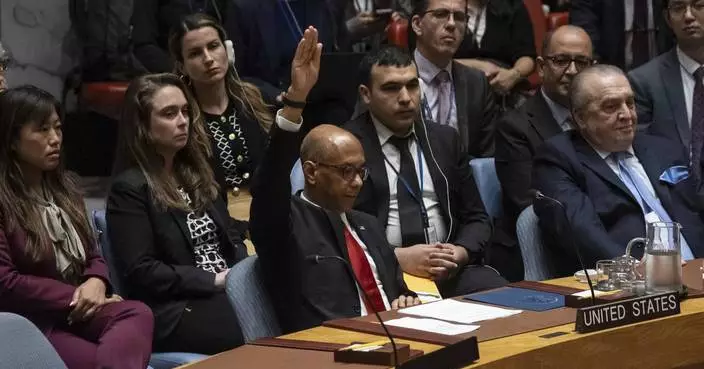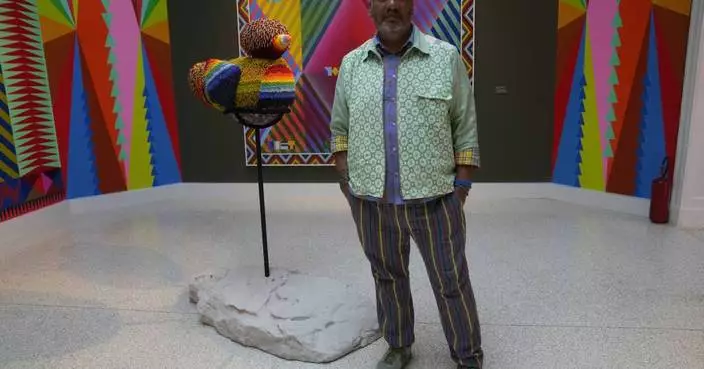Retired Supreme Court Justice John Paul Stevens never really put down his pen. Without opinions and dissents to write following his retirement from the Supreme Court in 2010, Stevens chose instead to write books from his home in Florida, reflecting on his life but also the Constitution.
Stevens, who died last week at 99 and will lie in repose at the court Monday, published his first book in retirement the year after he left the court. The memoir, "Five Chiefs," reflected on the five Supreme Court chief justices he had served under or known. A second book, "Six Amendments: How and Why We Should Change the Constitution," followed in 2014. And his most recent book, an autobiography, came out in May, just a month after his most recent birthday.
Stevens had been particularly outspoken recently on the topic of gun control. In "Six Amendments" he called for changing the Constitution's Second Amendment to permit gun control. Last year, after marches following the school shooting in Parkland, Florida, in which 17 people died, Stevens wrote an essay for The New York Times calling not only for significant gun control legislation but also the Second Amendment's repeal .
Also last year he came out against Justice Brett Kavanaugh's confirmation following Kavanaugh's angry denial of sexual assault allegations.
Other justices have chosen their own paths in retirement. A look at how the nation's three other retired Supreme Court justices have been spending their time:
ANTHONY KENNEDY
The Supreme Court's most recent retiree left the court a year ago this month. Kennedy, 82, said in stepping down that he wanted to spend more time with his family.
Former clerks say Kennedy, a father of three and "Papa" to nine grandchildren, is an enthusiastic grandparent. He's attended his grandkids' T-ball games and ballet performances. He spoke at the high school graduations of two of his grandchildren and has talked about seeing "Hamilton" on Broadway with his grandchildren.
This summer, Kennedy taught at the University of the Pacific's McGeorge School of Law program in Austria, a practice of his for decades. He's taught in some capacity for the California school since 1965.
DAVID SOUTER
Souter never really liked Washington and quickly returned to his home state of New Hampshire after leaving the court in 2009.
Now 79, Souter was just shy of 70 when he retired and decided he wasn't quite done wearing his judicial robes. Before joining the Supreme Court, Souter had been a judge on the federal appeals court based in Boston, and he's served on the court regularly in retirement, hearing more than 400 cases.
SANDRA DAY O'CONNOR
The first woman to serve on the Supreme Court left the court in 2006 under unhappy circumstances. Her husband was suffering from Alzheimer's disease and O'Connor, then 75, retired in part to care for him. He died in 2009.
O'Connor, now 89, announced late last year that she too had been diagnosed with the beginning stages of dementia, probably Alzheimer's disease. O'Connor had stopped speaking publicly more than two years before the announcement, but for years she led an active retirement.
O'Connor returned to her home state of Arizona upon retiring and, like Souter, served as a visiting appeals court judge, hearing more than 175 cases and serving with all but two of the nation's 13 federal appeals courts.
Like Stevens, she also wrote in retirement, authoring a book of stories about Supreme Court history. She also founded iCivics, an organization that promotes civic education in schools.
Follow Jessica Gresko on Twitter at twitter.com/jessicagresko.
TOKYO (AP) — The American envoy to the United Nations called Friday for countries armed with atomic weapons to pursue nuclear disarmament as she visited the atomic bomb museum in Nagasaki, Japan.
Linda Thomas-Greenfield, who became the first U.S. cabinet member to visit Nagasaki, stressed the importance of dialogue and diplomacy amid a growing nuclear threat in the region.
“We must continue to work together to create an environment for nuclear disarmament. We must continue to prevent the spread of nuclear weapons in every corner of the world,” she said after a tour of the atomic bomb museum.
“For those of us who already have those weapons, we must pursue arms control. We can and must work to ensure that Nagasaki is the last place to ever experience the horror of nuclear weapons,” she added, standing in front of colorful hanging origami cranes, a symbol of peace.
The United States dropped the world’s first atomic bomb on Hiroshima on Aug. 6, 1945, destroying the city and killing 140,000 people. A second attack three days later on Nagasaki killed 70,000 more people. Japan surrendered on Aug. 15, ending World War II and its nearly half-century of aggression in Asia.
Nagasaki Gov. Kengo Oishi said in a statement that he believed Thomas-Greenfield's visit and her first-person experience at the museum “will be a strong message in promoting momentum of nuclear disarmament for the international society at a time the world faces a severe environment surrounding atomic weapons.”
Oishi said he conveyed to the ambassador the increasingly important role of Nagasaki and Hiroshima in emphasizing the need of nuclear disarmament.
Thomas-Greenfield's visit to Japan comes on the heels of Prime Minister Fumio Kishida's official visit to the United States last week and is aimed at deepening Washington's trilateral ties with Tokyo and Seoul. During her visit to South Korea earlier this week, she held talks with South Korean officials, met with defectors from North Korea and visited the demilitarized zone.
The ambassador said the United States is looking into setting up a new mechanism for monitoring North Korea's nuclear weapons program. Russia and China have thwarted U.S.-led efforts to step up U.N. sanctions on North Korea over its ballistic missile testing since 2022, underscoring a deepening divide between permanent Security Council members over Russia’s war on Ukraine.
She said it would be “optimal” to launch the new system next month, though it is uncertain if that is possible.
The U.N. Security Council established a committee to monitor sanctions, and the mandate for its panel of experts to investigate violations had been renewed for 14 years until last month, when Russia vetoed another renewal.
In its most recent report, the panel of experts said it is investigating 58 suspected North Korean cyberattacks between 2017 and 2023 valued at approximately $3 billion, with the money reportedly being used to help fund its weapons development.
The United States, Japan and South Korea have been deepening security ties amid growing tension in the region from North Korea and China.
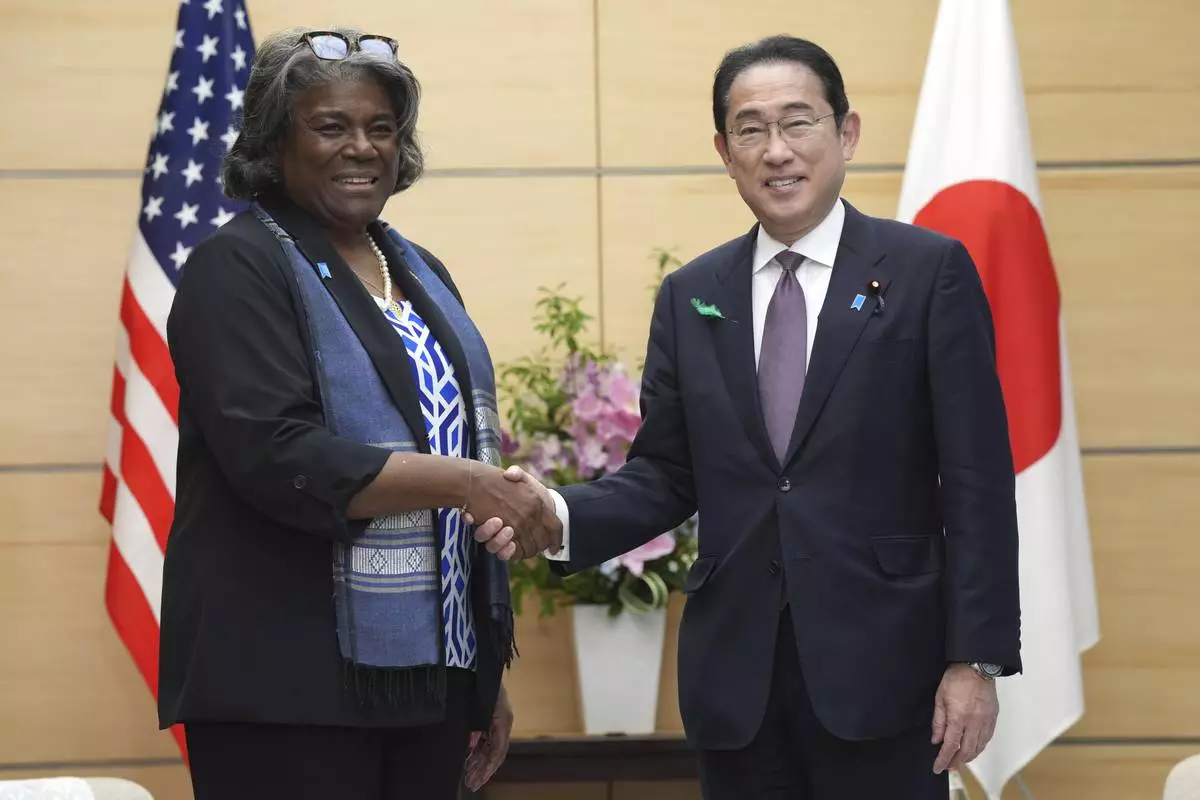
U.S. Ambassador to United Nations Linda Thomas-Greenfield, left, and Japan's Prime Minister Fumio Kishida, right, shake hands during a meeting Friday, April 19, 2024, at prime minister's office in Tokyo. (AP Photo/Eugene Hoshiko, Pool)

U.S. Ambassador to United Nations Linda Thomas-Greenfield, left, and Japan's Prime Minister Fumio Kishida, right, shake hands during a meeting Friday, April 19, 2024, at prime minister's office in Tokyo. (AP Photo/Eugene Hoshiko, Pool)
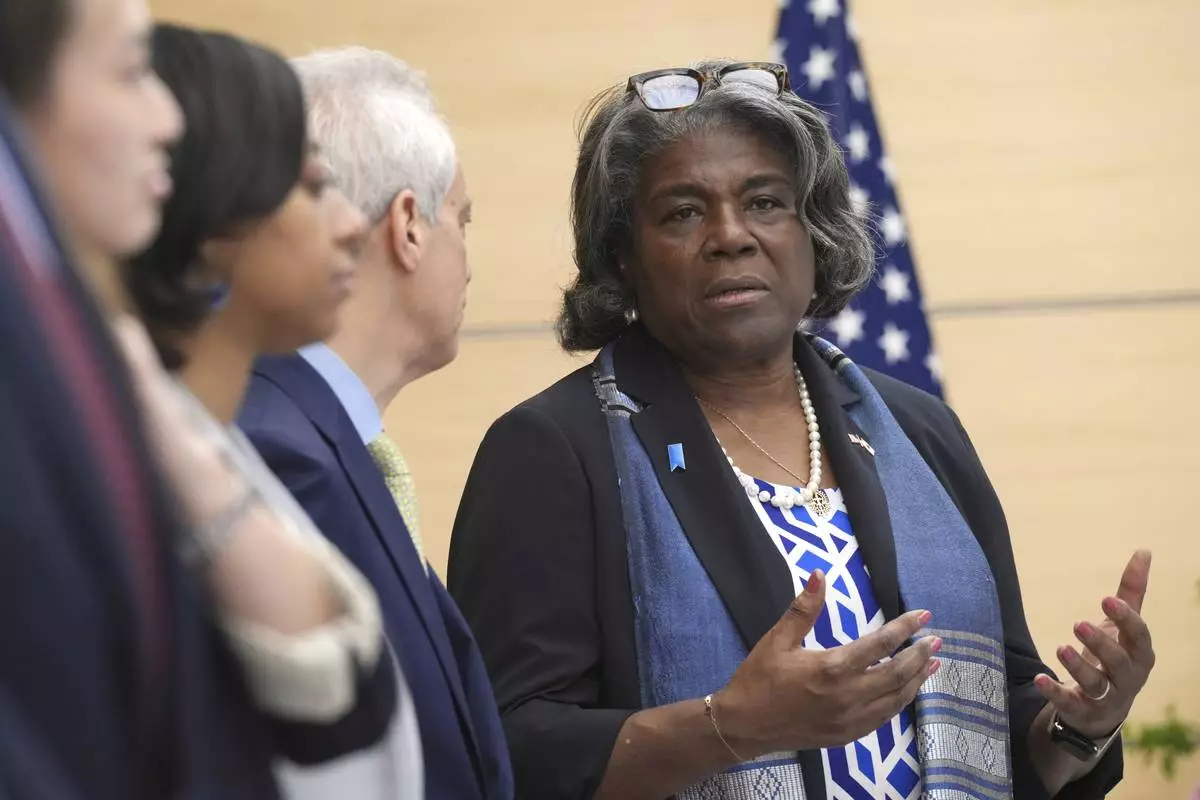
U.S. Ambassador to United Nations Linda Thomas-Greenfield, right, speaks to Rahm Emanuel, U.S. Ambassador to Japan, second right, as they wait for a meeting with Japan's Prime Minister Fumio Kishida Friday, April 19, 2024, at prime minister's office in Tokyo. (AP Photo/Eugene Hoshiko, Pool)
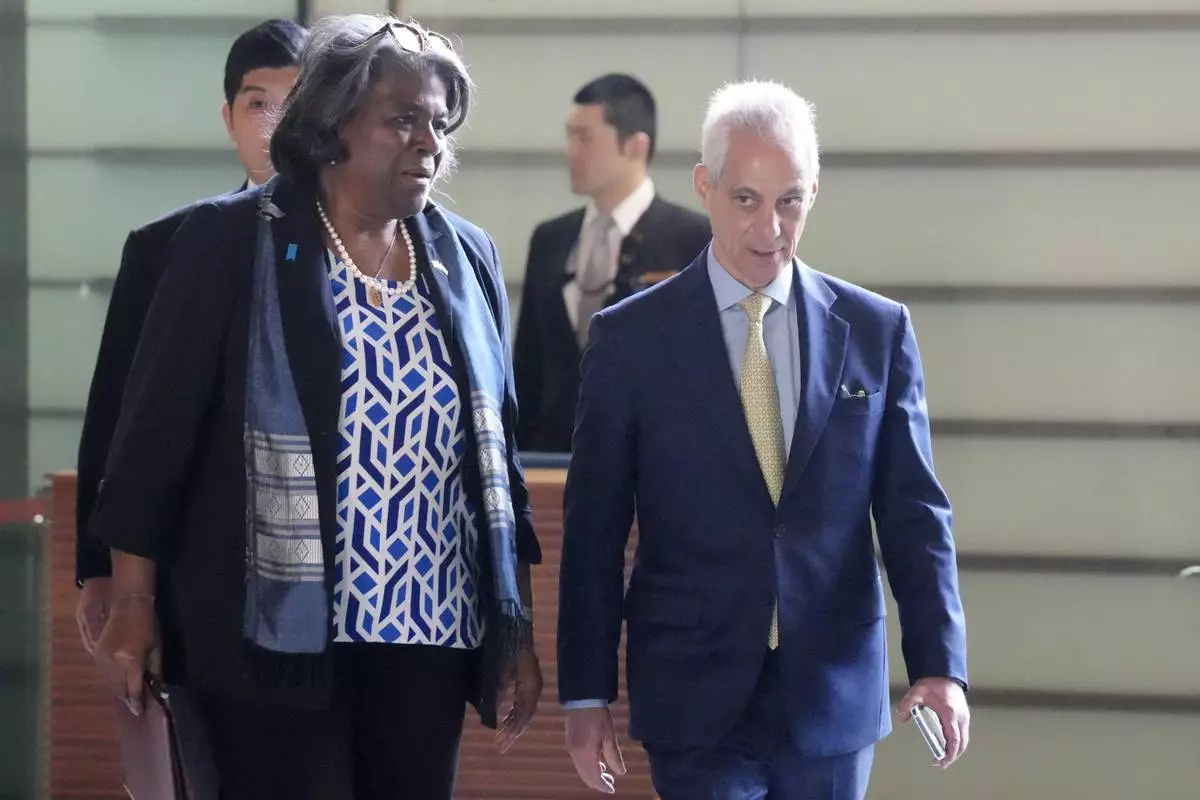
U.S. Ambassador to United Nations Linda Thomas-Greenfield, left, and Rahm Emanuel, U.S. Ambassador to Japan, right, walk to meet Japan's Prime Minister Fumio Kishida Friday, April 19, 2024, at prime minister's office in Tokyo. (AP Photo/Eugene Hoshiko, Pool)
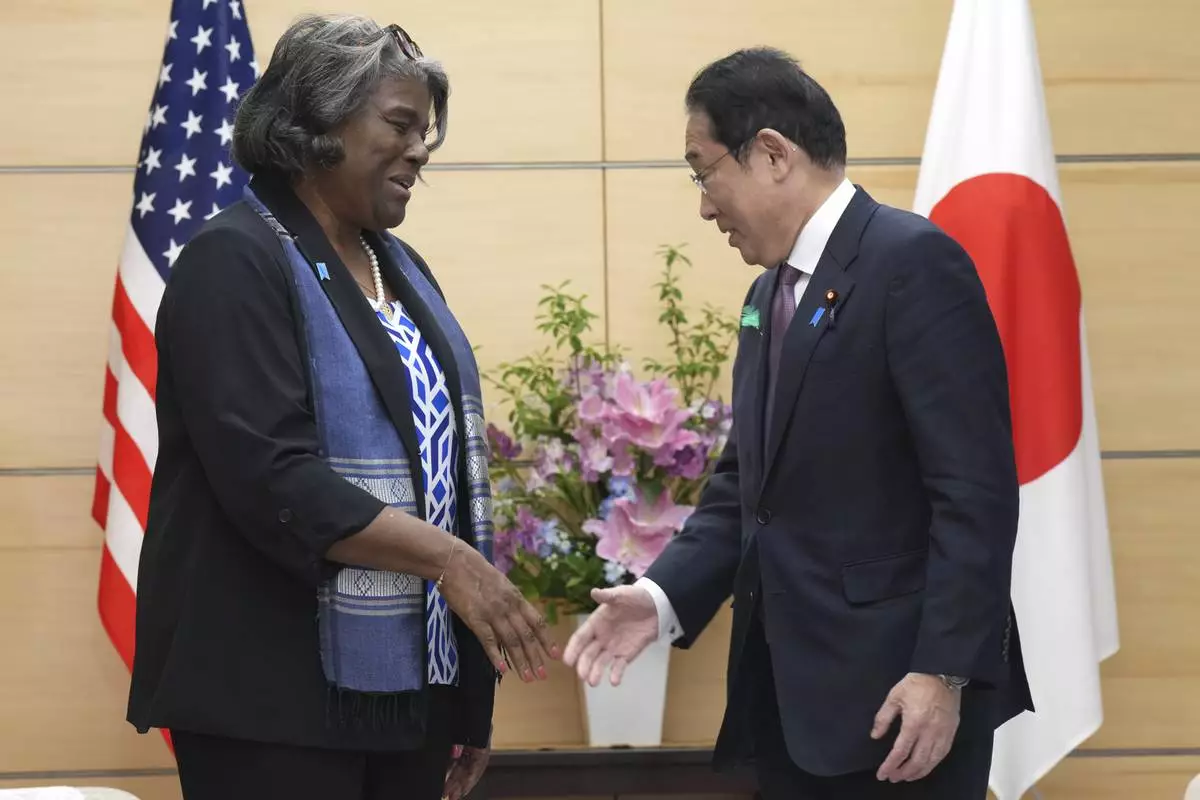
U.S. Ambassador to United Nations Linda Thomas-Greenfield, left, and Japan's Prime Minister Fumio Kishida, right, talk prior to a meeting Friday, April 19, 2024, at prime minister's office in Tokyo. (AP Photo/Eugene Hoshiko, Pool)
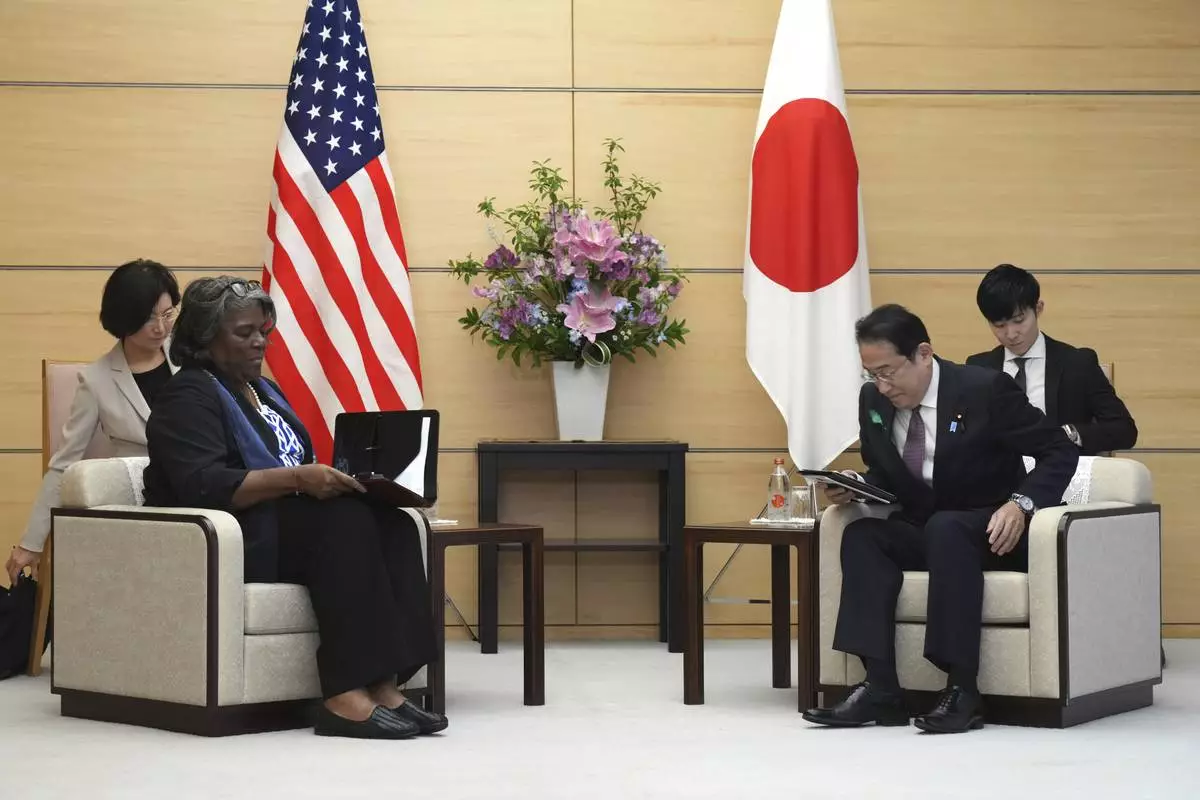
U.S. Ambassador to United Nations Linda Thomas-Greenfield, left, and Japan's Prime Minister Fumio Kishida, right, prepare to talk during a meeting Friday, April 19, 2024, at prime minister's office in Tokyo. (AP Photo/Eugene Hoshiko, Pool)










